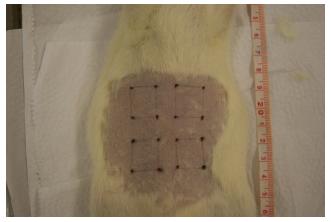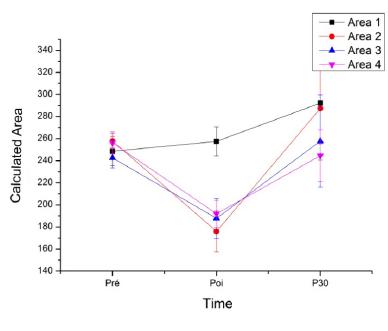PURPOSE
: To evaluate the effect of different energies and stacking in skin shrinkage.
METHODS
: Three decreasing settings of a fractional CO2 laser were applied to the abdomen of Twenty five Wistar rats divided into three groups. Group I (n=5) was histologically evaluated for microthermal zones dimensions. Groups II and III (n=10 each) were macroscopic evaluated with freeware ImageJ for area contraction immediately and after 30 and 60 days.
RESULTS
: No statistical significance was found within microthermal zone histological dimensions (Group I) in all settings studied. (Ablation depth: 76.90 to 97.18µm; Coagulation depth: 186.01 to 219.84 µm). In Group II, macroscopic evaluation showed that all settings cause significant immediate skin contraction. The highest setting cause significant more intense tightening effect initially, contracting skin area from 258.65 to 179.09 mm2. The same pattern was observed in Group III. At 30 and 60 days, the lowest setting significantly sustained contraction.
CONCLUSION
: Lower fractional CO2 laser energies associated to pulse stacking could cause consistent and long lasting tissue contraction in rats.
Lasers, Gas; Skin Aging; Laser Therapy; Rats






